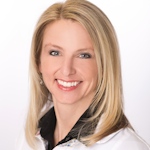I hate change. But so does my team. You can imagine their excitement when I announced that we were changing up some of our workflow . . . again. Why would I do this, especially when we were already successfully using aligner therapy in our practice? Good question.
With a little reassurance and support from our local rep, we made the switch to Dentsply Sirona’s SureSmile Clear Aligners. And we made that change for several reasons.
Refinement
First, refinement is a four-letter word in our office, and we seemed to be saying it a lot. We have a family practice, so not only is it an inconvenience for us if there are glitches, but we know what patients are envisioning as far as the investment they’ve made. I like the reassurance we get in the material of the aligners (Essix ACE), the confidence in the treatment plans we get back, and the variable trim line that can reduce the number of buttons while still adhering to the esthetic advantage that clear aligners can bring.
Digital workflow
Second, the digital workflow makes it easy to use any digital scanning system. As long as you can create an STL file, then you are good to go with your digital scanner. Analog impressions work as well. You can set your detailed preferences and work with orthodontic professionals to make the treatment plan as seamless as possible. The big takeaway here is that we don’t have to rely on an algorithm. Everything goes through a treatment planning process with trained orthodontic technicians, so there is less need for refinement. To fully utilize the technology, you have an option of combining 3-D cone beam information for your patient. Also, if you have a 3-D printer, you can even request the files so you can print and make your own aligners in-office.
Lab cost
Third—and probably the biggest reason you’ve been waiting for—is lab cost. By having a lower price point on the lab end, I can lower my prices too. This way, even more patients will be able to move forward with the treatment they want or need.
Cost to patients
We as a dental community need to offer a menu of financial arrangements for our patients. The whole reason direct-to-consumer aligners are doing so well is due to marketing their monthly fee. Can you tell me what the total fee for direct-to-consumer aligners is? I’ll bet most of the aligner users can’t either.
Let’s meet our patients where they are, speak their language, and offer them the comprehensive treatment they may need but didn’t think they could afford. I can tell you right now that most patients immediately say “no” to aligners, because in their mind orthodontics is like what their children went through. What adult wants two years of metal braces that come at a substantial fee? How about clear aligners with a reasonable lab cost that are properly treatment planned so there’s no need to change course midtreatment? This sounds like just the change we need.
Erin Elliott, DDS, a practicing dentist in Post Falls, Idaho, has successfully integrated dental sleep medicine into her practice. She lectures extensively and leads a hands-on workshop focusing on practical strategies for successful implementation of sleep medicine into the general practice. She is active in the American Academy of Sleep Medicine and American Academy of Dental Sleep Medicine, and she is a past president and diplomate of the American Sleep and Breathing Academy. Contact her at [email protected].







